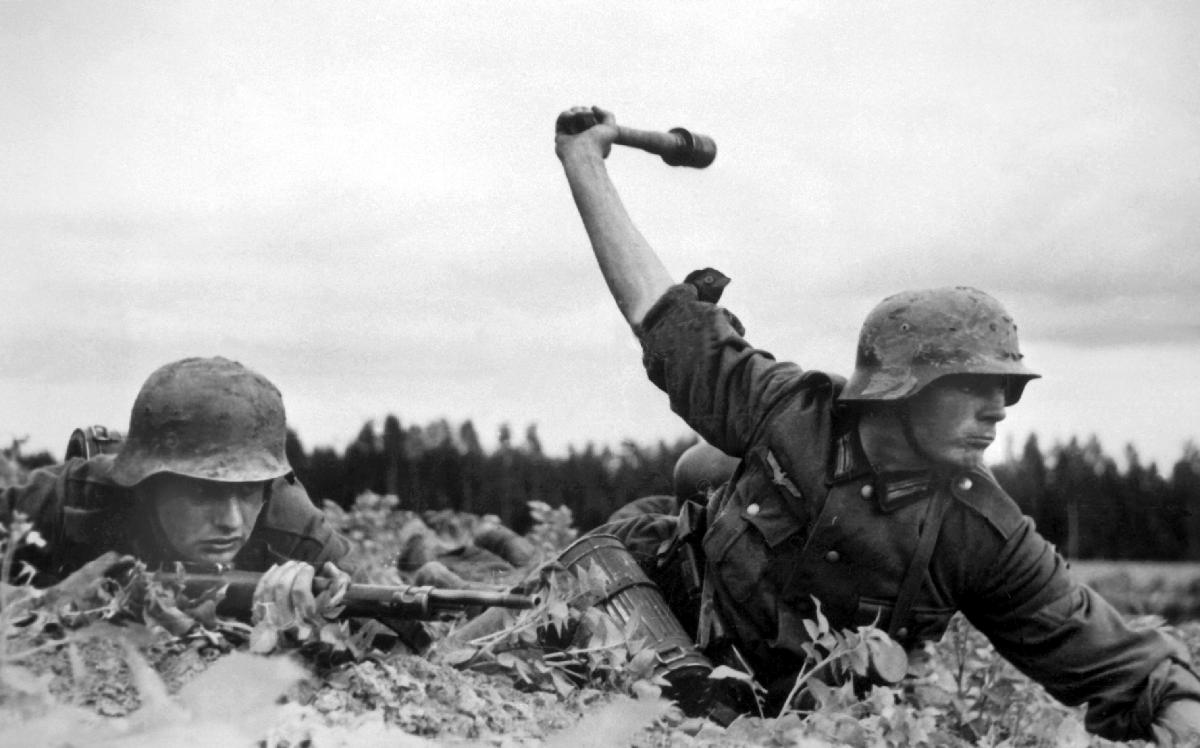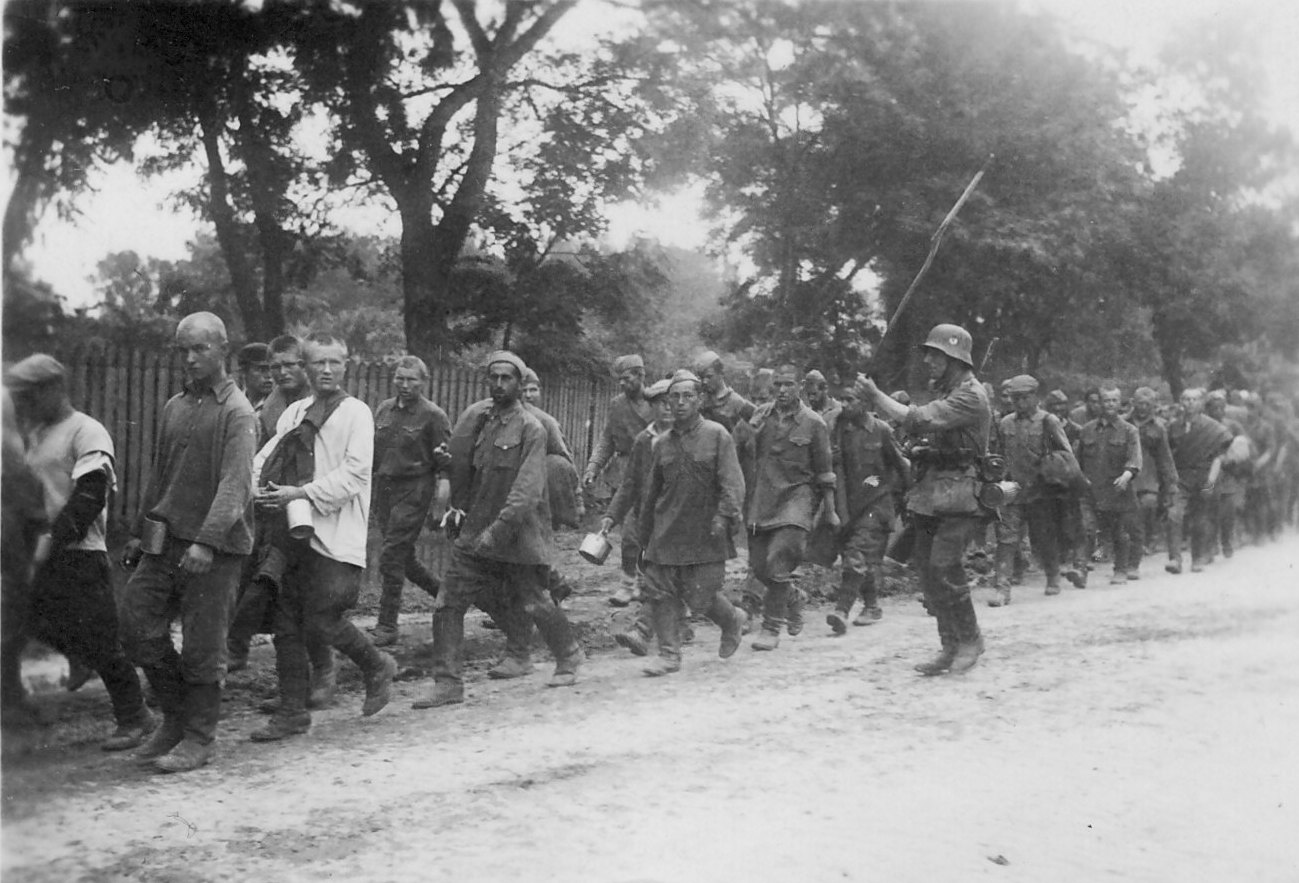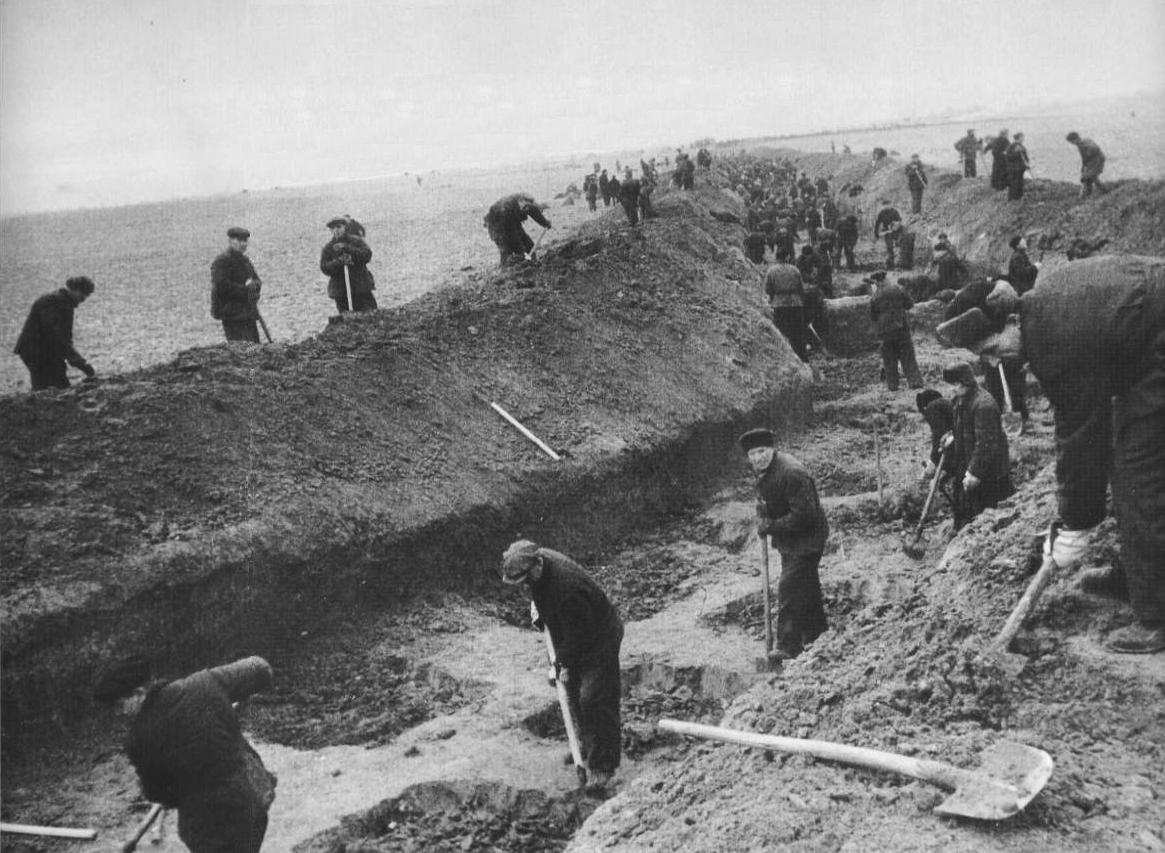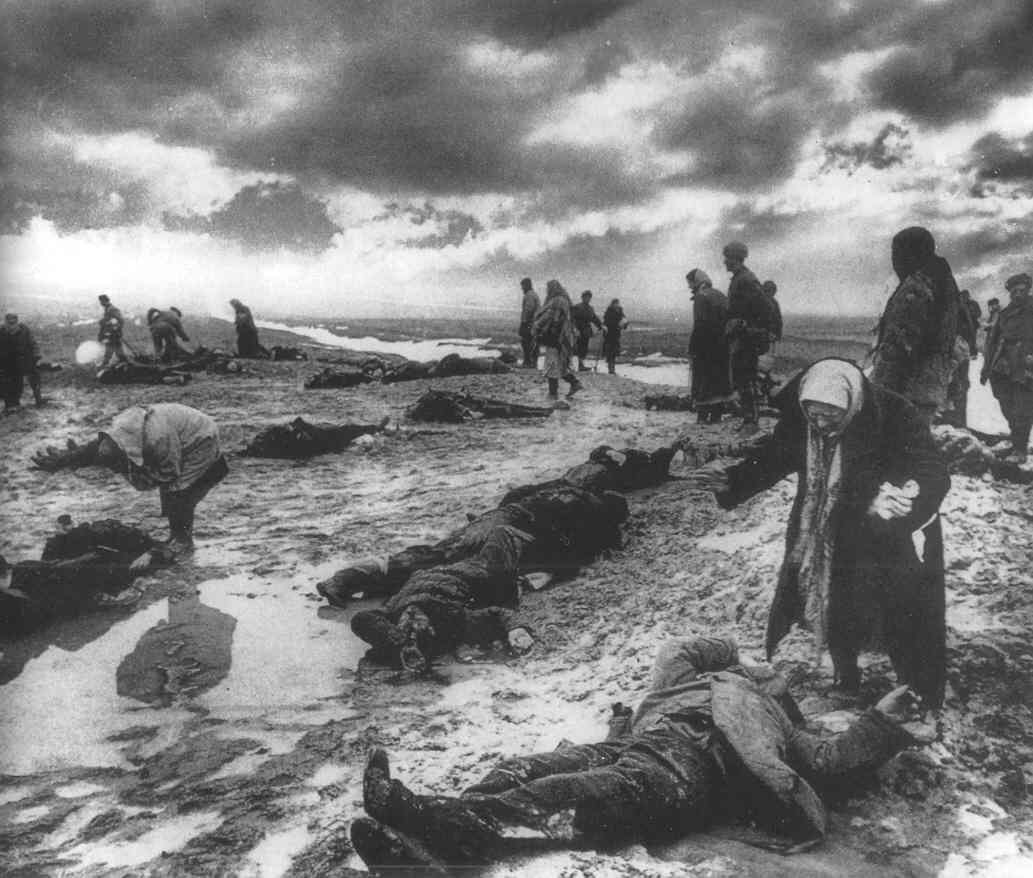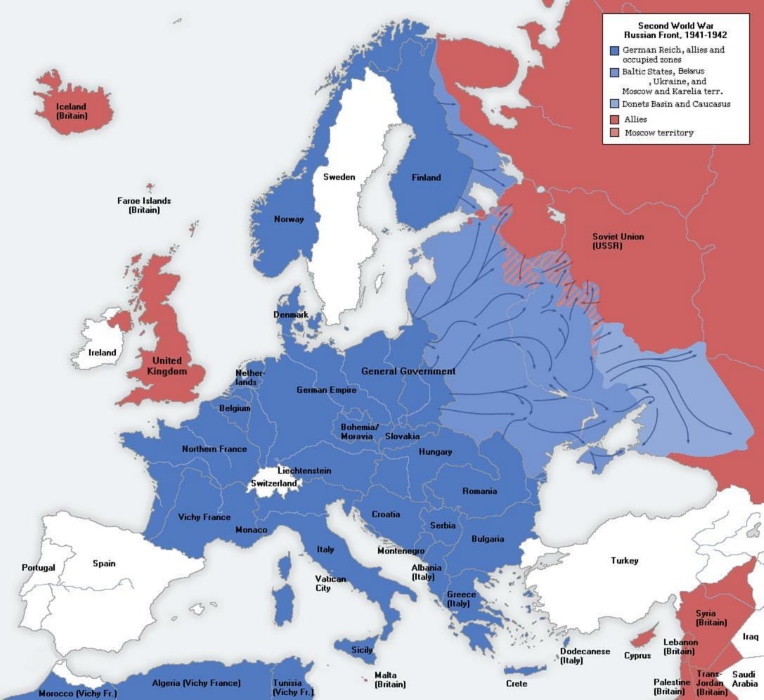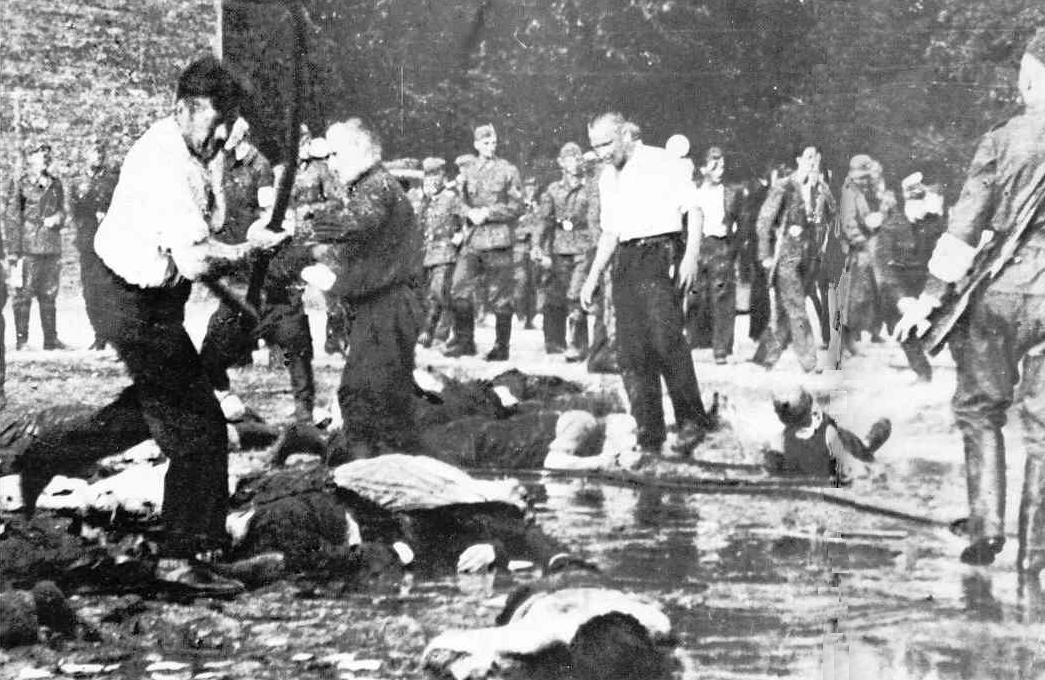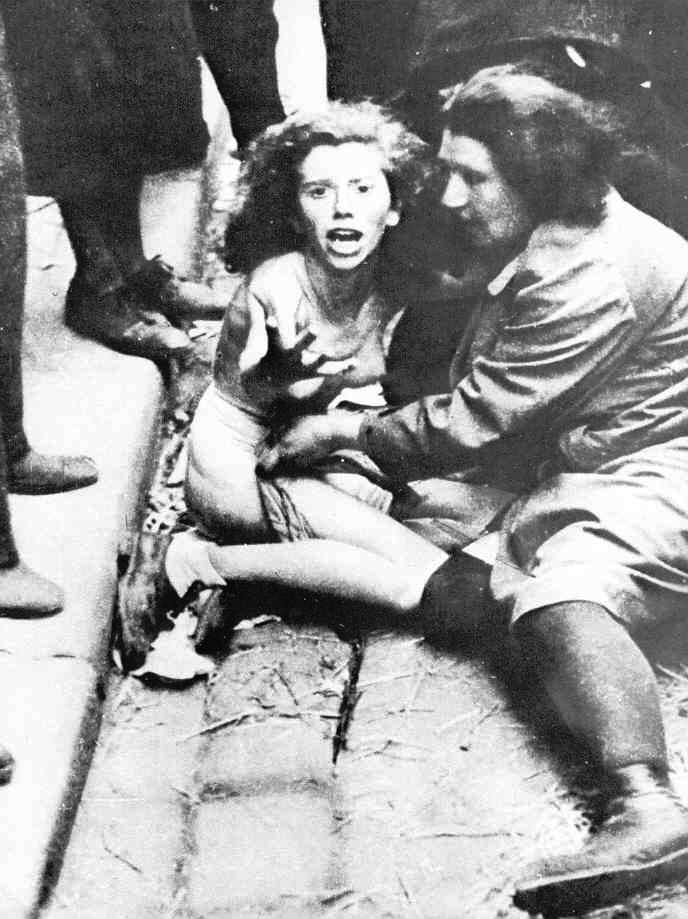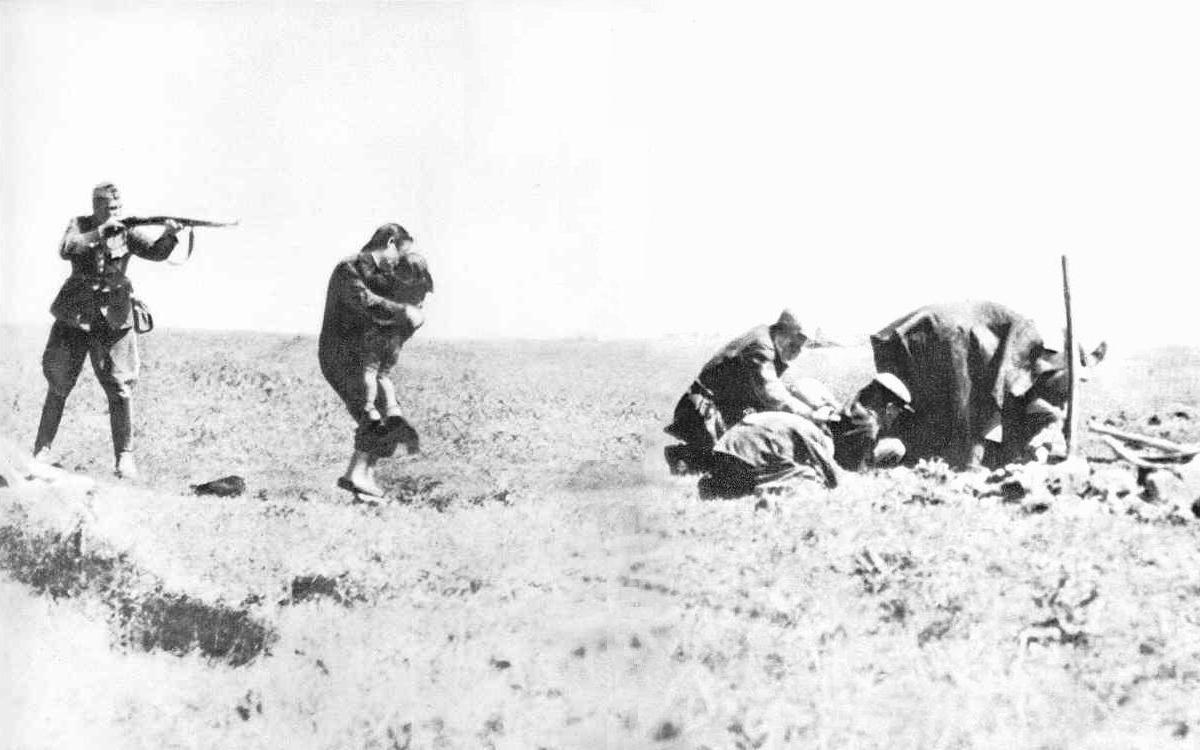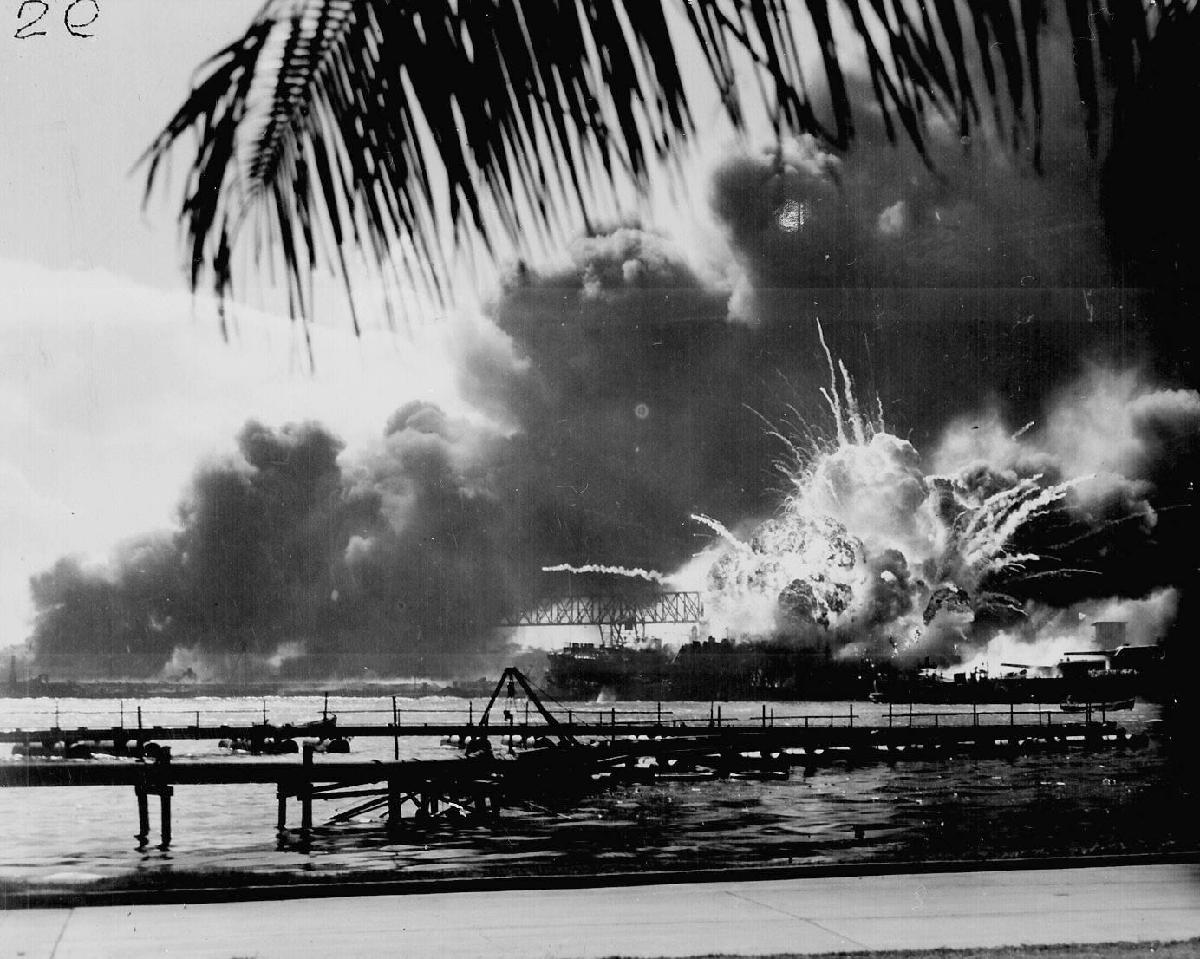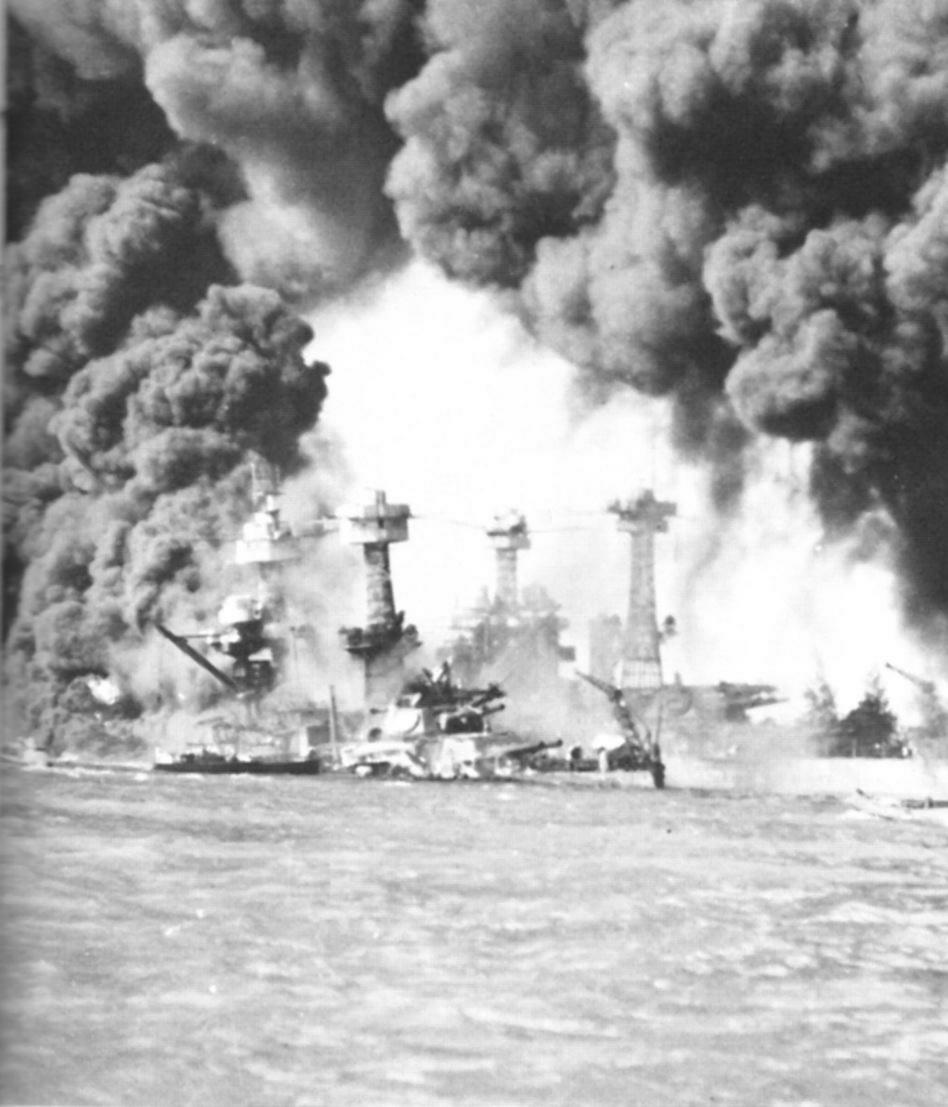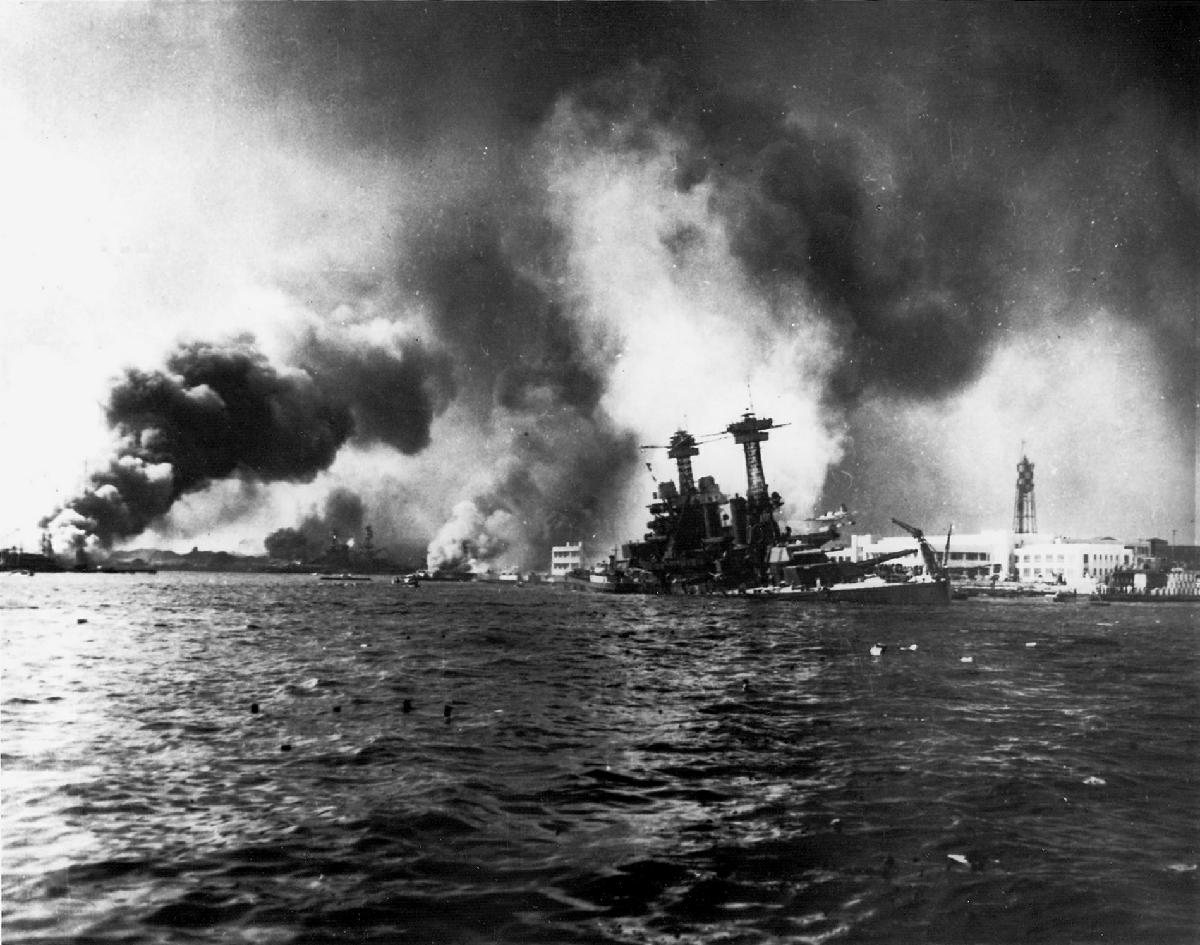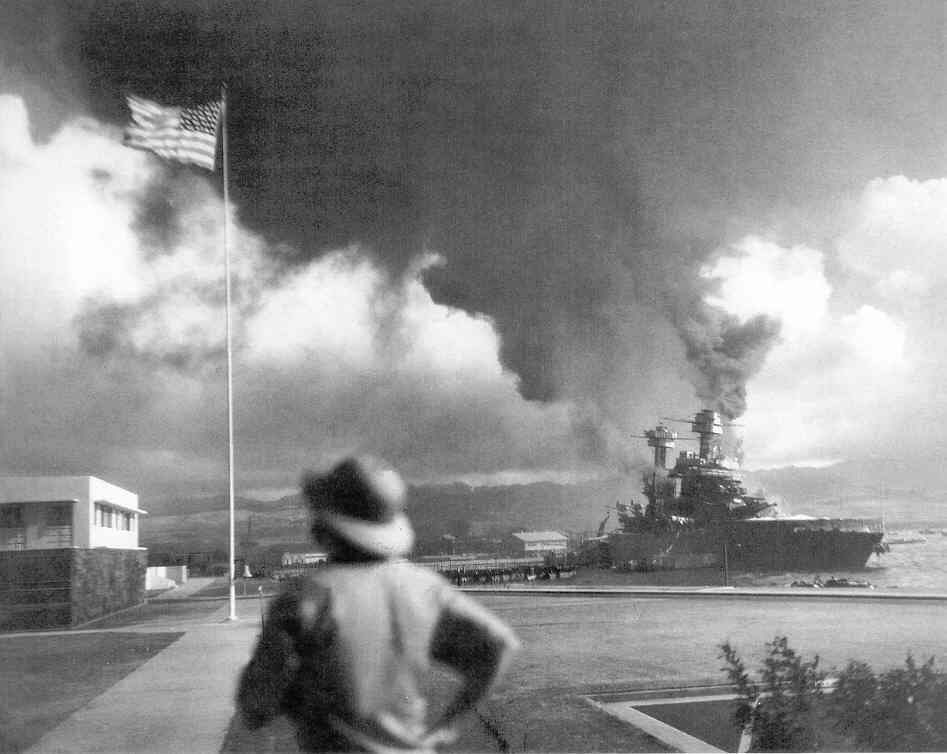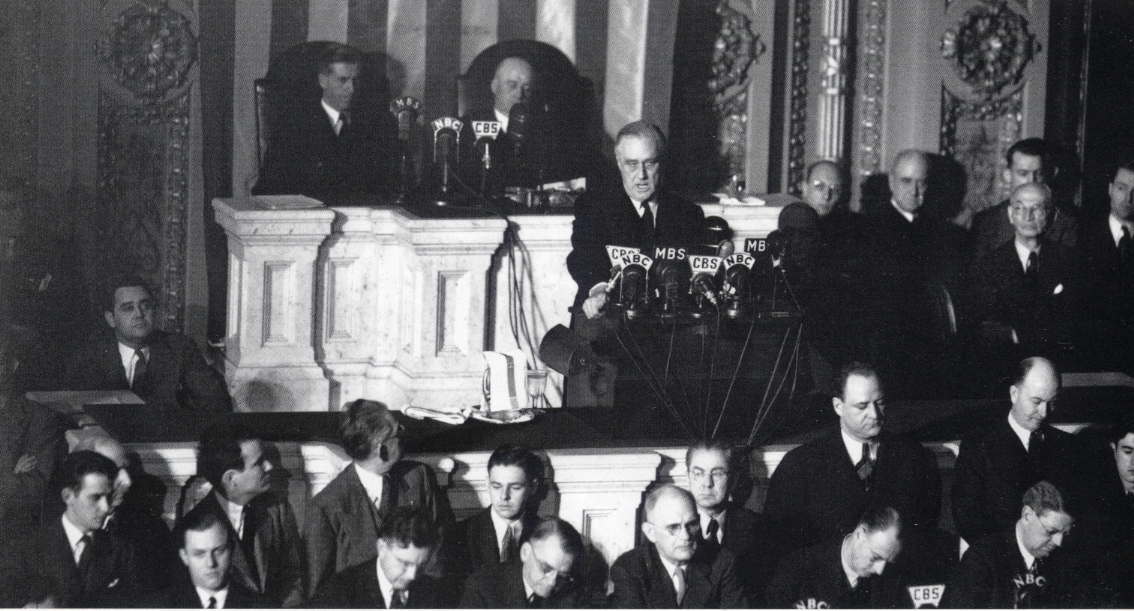16. WORLD WAR – ROUND TWO


RUSSIA AND AMERICA ARE DRAGGED INTO THE WAR
 Barbarossa: Hitler's surprise assault on
Barbarossa: Hitler's surprise assault onStalin's Russia - Summer of 1941
 Hitler's forces now become focused in
Hitler's forces now become focused in
their hunt for Jewish "undesireables"
 Japan's attack on Pearl Harbor brings
Japan's attack on Pearl Harbor brings
America into the War (December 1941)
 Three days later, Hitler declares war
Three days later, Hitler declares war
against America
 The formation of the "United Nations"
The formation of the "United Nations"
The textual material on page below is drawn directly from my work
A Moral History of Western Society © 2024, Volume Two, pages 168-171
... although the page below generally goes into much greater detail.
"OPERATION
BARBAROSSA": HITLER'S SURPRISE ASSAULT ON STALIN'S RUSSIA – SUMMER OF 1941 |
| By
September of 1940, with the British Royal Air Force still in the air
and able to fight off German air cover needed for any invading ground
forces, Hitler came to the conclusion that he would have to ‘postpone’
the planned invasion of England. With this humiliation of not being
able to deliver on a promised conquest of England, Hitler felt the
pressure to strike elsewhere in testimony of Aryan greatness. By
December of 1940 he was making plans to make good on a long-standing
promise to convert the Slavic lands to the East (principally the
Ukraine) into a "breadbasket" for Germany – and Lebensraum ("room for
living") for an expanding Aryan German society and culture. Germans
could also use the inferior people (Untermenschen) of the Slavic lands
as a source of slave labor to strengthen Germany’s industrial
capabilities. And seized oil fields of Azerbaijan would also aid in
this strengthening of Germany. Also, Hitler was certain that in seeing
Russia defeated, England would finally lose heart and accept any kind
of peace deal with Germany it could get. Some of Hitler’s generals prepared a study that demonstrated that the venture would cost more than it would gain. But Hitler, by this time positive that he had special (almost mystical) skills to see possibilities where other mortals – including importantly his generals – were blind, ignored their arguments. Plans were set for invasion of the East in mid-May of the next year (1941). Through the winter of 1940-1941 the Germans began massing huge amounts of troops along the German-Russian occupation line in Poland. The Yugoslav diversion. But Hitler did not get the operation underway as quickly as planned because the movement of his troops through Yugoslavia on their way East was dismantled when a Yugoslav poliltical coup overthrew the Yugoslav King, who had been cooperating with Hitler. Consequently, Hitler in April turned his troops South in the heartland of Yugoslavia in order to bring Yugoslavia back under "cooperation" with him and his operation. But the delay would prove costly, because it would begin his operation much later into the season ... into a deadly winter in fact, one that would cripple the momentum of the operation. Ultimately this delay proved to be disastrous for Hitler. Stalin's response. But Stalin also seemed slow to respond. Actually, he had vastly more tanks and planes at hand than did the Germans, although because of his purges of the Red Army in 1937-1939, his officers were young and inexperienced. But still, Stalin was not really ready to face the possibility that war with Germany was at hand. Churchill warned Stalin that through his military intelligence he had every reason to believe that Hitler was indeed about to attack Russia. Stalin would not hear of it, claiming that Churchill was simply trying to start something between the Russians and Germans just to get the Germans off the English backs. But indeed, on June 22nd, 1941 Hitler sent his troops rolling into Russian-controlled Poland. Their momentum soon had the Germans on Soviet soil itself. Part of Hitler’s army raced toward the northeast, trying to seize Leningrad (St. Petersburg). Hitler's arrogant stupidity in Ukraine. Another section of his army made a lunge toward the southeast, through the Ukraine. Amazingly, the Ukrainians came out to greet their "liberators" with flowers and cheers (the Ukrainians hated Stalin and his Russian Communists); equally amazing (not really!) Hitler was furious when he heard that his soldiers were fraternizing with the Ukrainians, and ordered them instead to start rounding up the Untermenschen for slave labor service. This bit of arrogance was another key factor in crippling Hitler’s plan to overrun the Soviet Union – at least in the south. Rather
than surrender, the Russians employed the same strategy that had worked
so successfully when Napoleon and his French army invaded Russia back
in 1812. The Russians fell back, burning their own lands to keep crops
and herds from being of use to the invaders. Back they went, and then
further back. German supply lines became overstretched – and supplies
lacking. Russian partisan groups began hit-and-run sniping and
skirmishing with Germans patrols. Even the Ukrainians began to join the
Partisans attacking vulnerable positions in the German lines. The
Germans retaliated with incredible acts of cruel revenge enacted on the
conquered civilians. The hatred between the two sides became intense. |
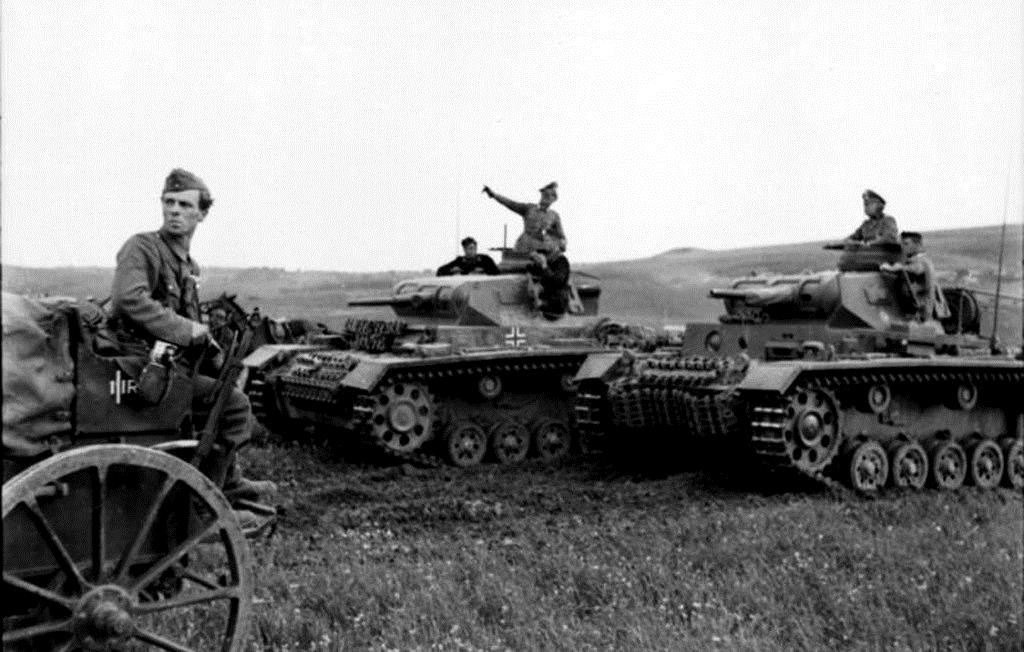
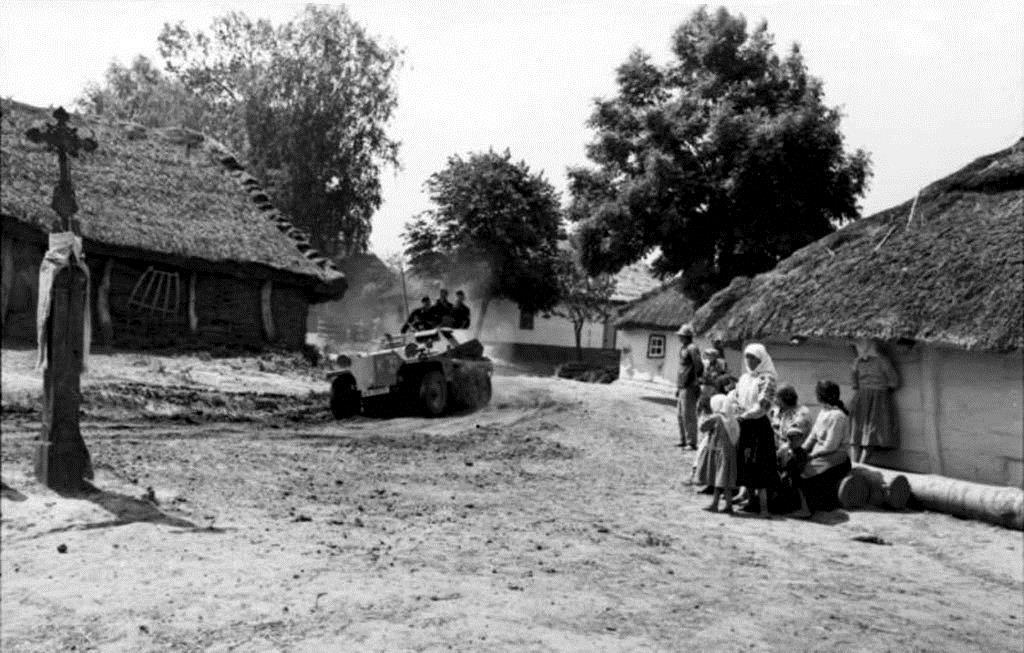
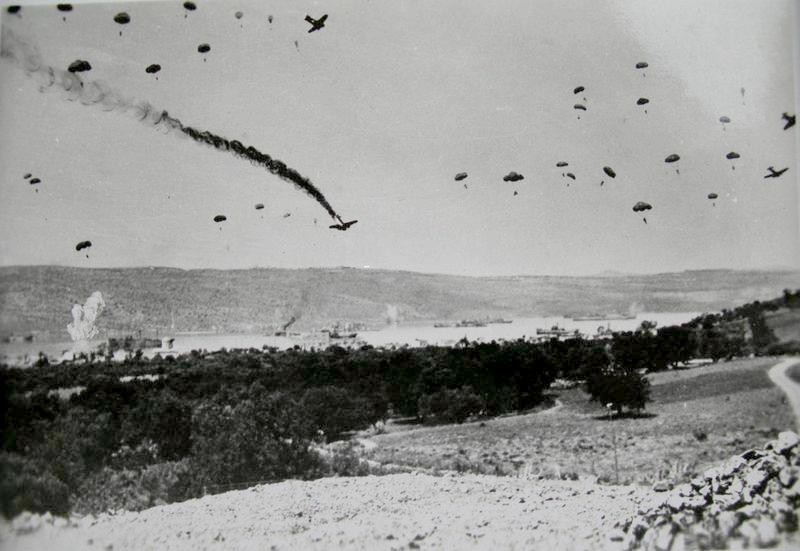
At the same time the Germans moved to take control of Crete ... in the hopes of controlling the Easten Mediterranean
(thereby cutting off the British from vital Asian support)
Finally ... the assault on Stalin's Soviet Empire
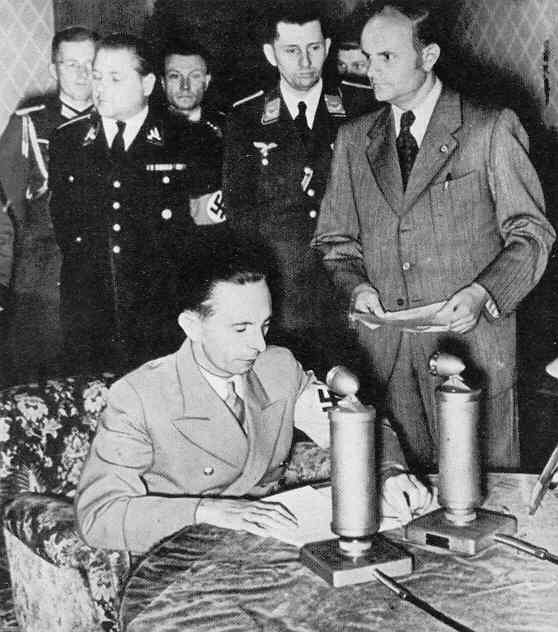
Süddeutscher Verlag -Bilderdienst, Munich
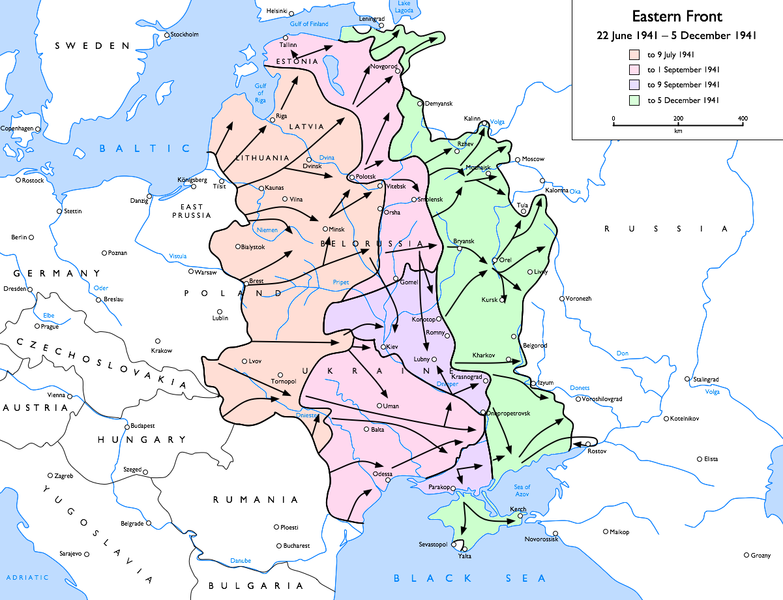
Wikipedia - "Eastern Front (World War II)"
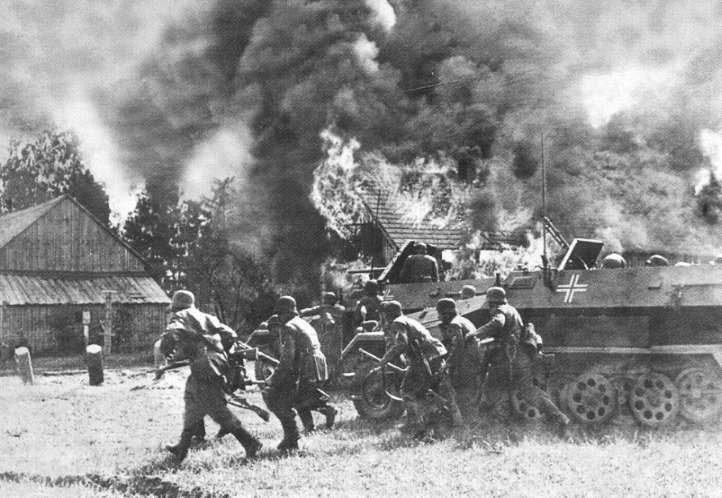
National Archives 242-GAP-286B-4
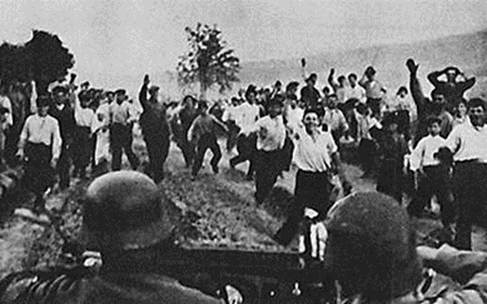
At first, many Ukrainians - having suffered so much at the hands of Stalin - viewed the Germans as liberators. But Hitler ordered his troops to cease their fraternizing with the locals. The mood soon turned sour.
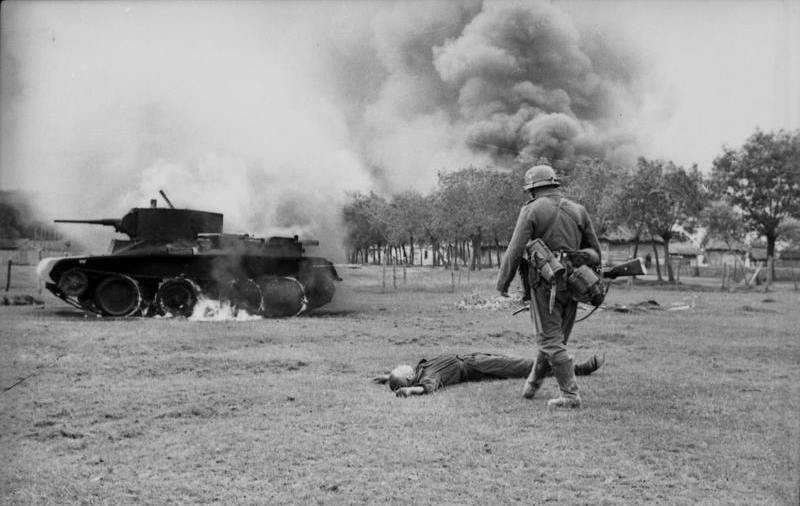
Deutsches Bundesarchiv
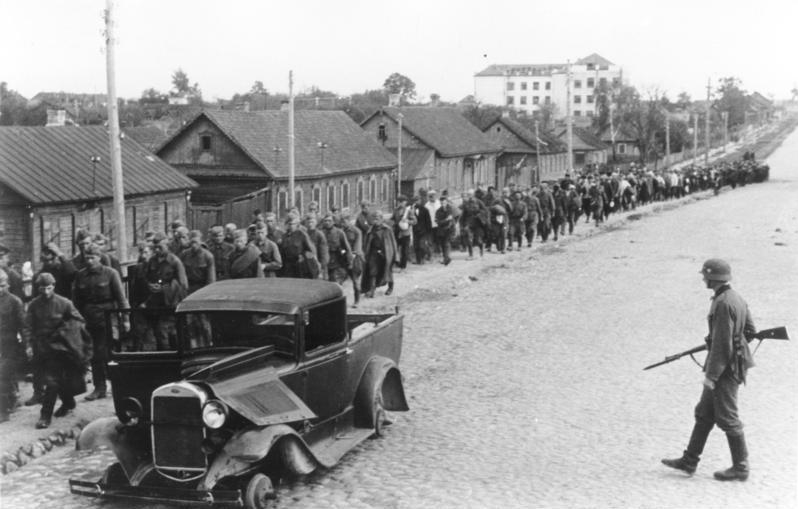
Deutsches Bundesarchiv
Armia Krajowa
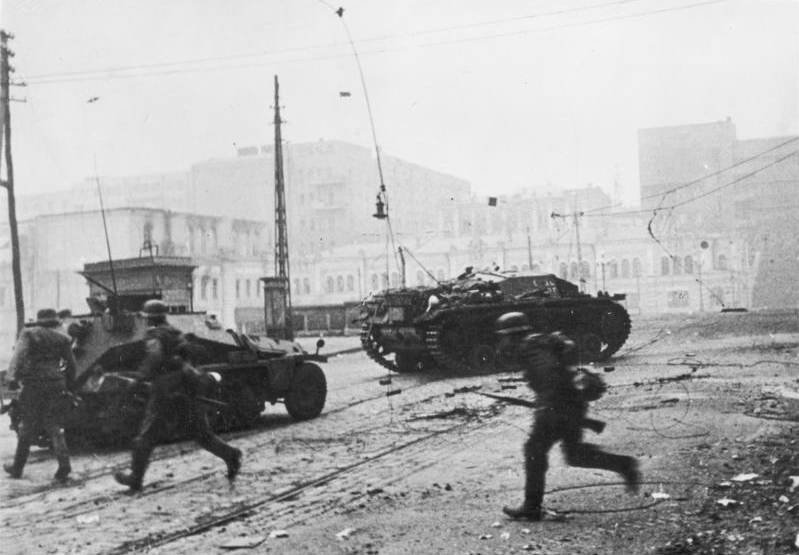
Deutsches Bundesarchiv
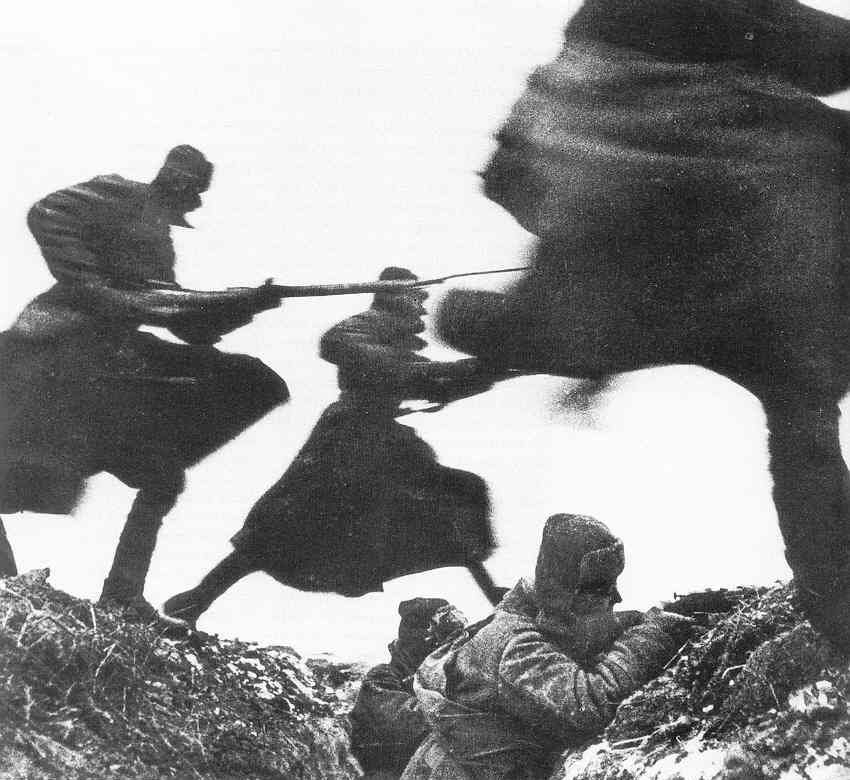
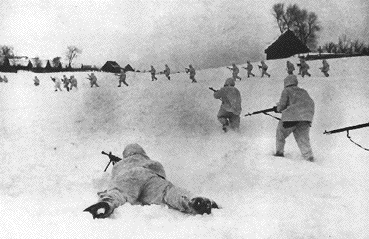
Soviet troops at the Battle of Moscow - December 1941
Wikipedia - "World War II"
NOW
IN POSSESSION OF MOST OF EASTERN EUROPE, HITLER'S GERMAN FORCES CAN BE MORE THOROUGH IN THEIR HUNT FOR JEWISH "UNDESIRABLES" |
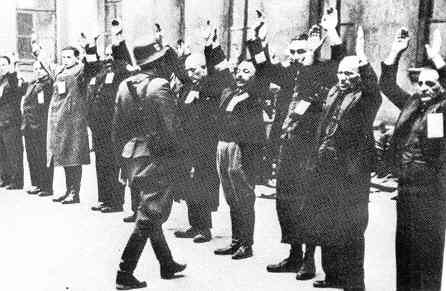
National Archives
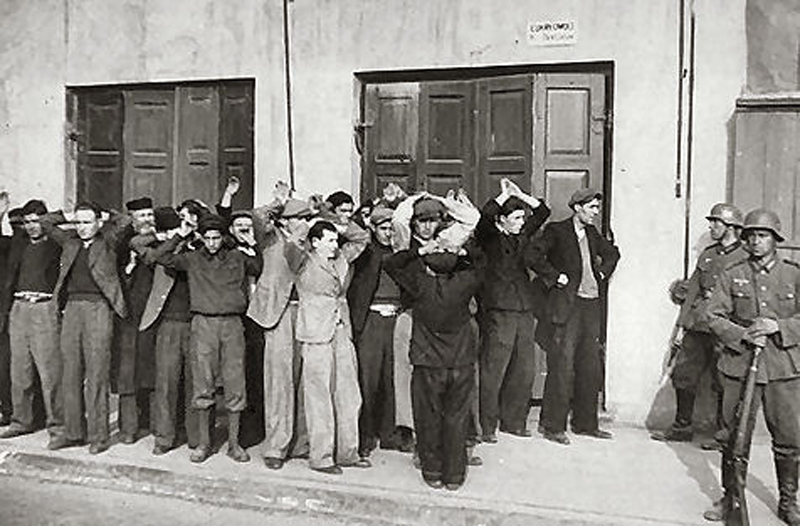
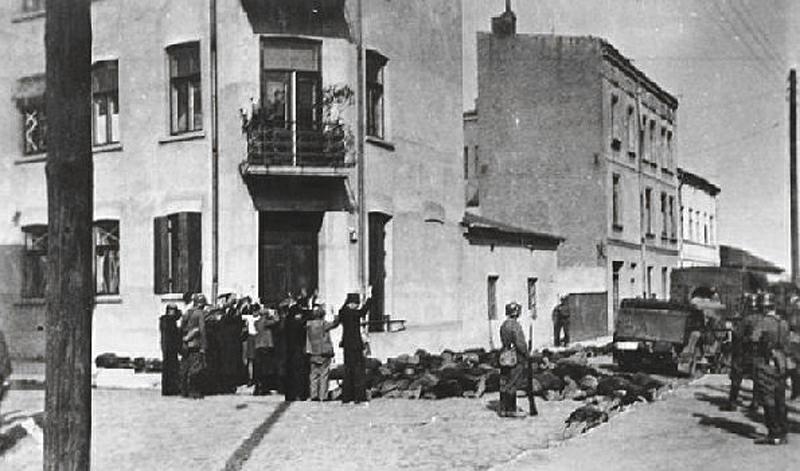
Jewish prisoners stand before Jews executed in Czestochowa
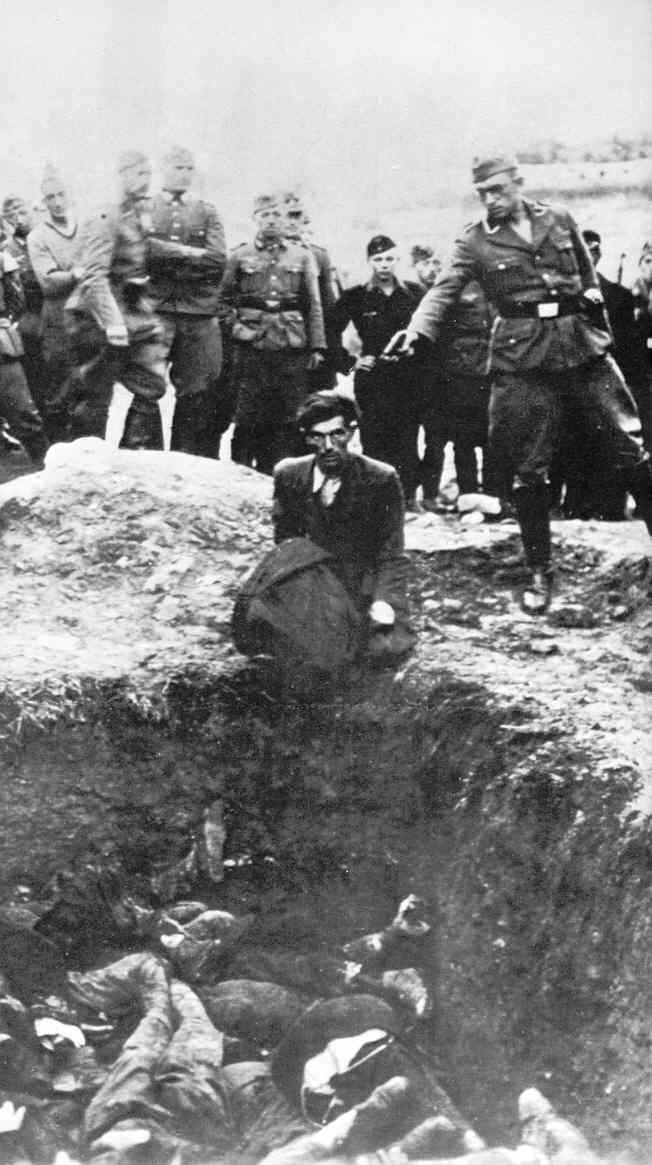
and dumped into a pit with other dead Jews
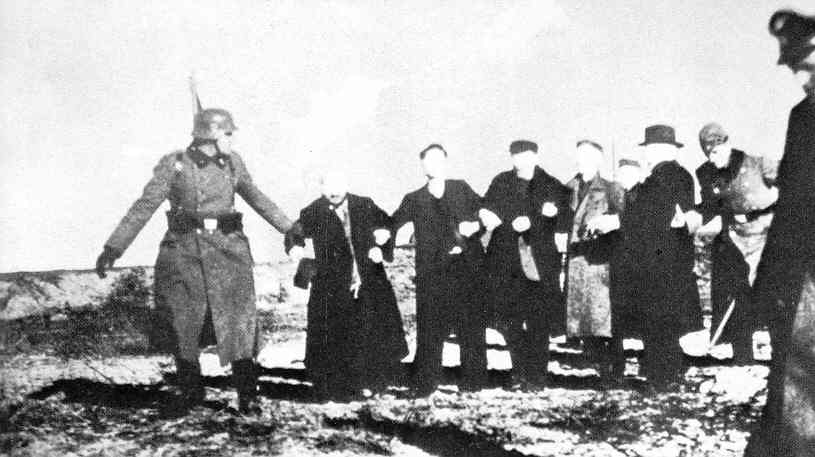
National Archives
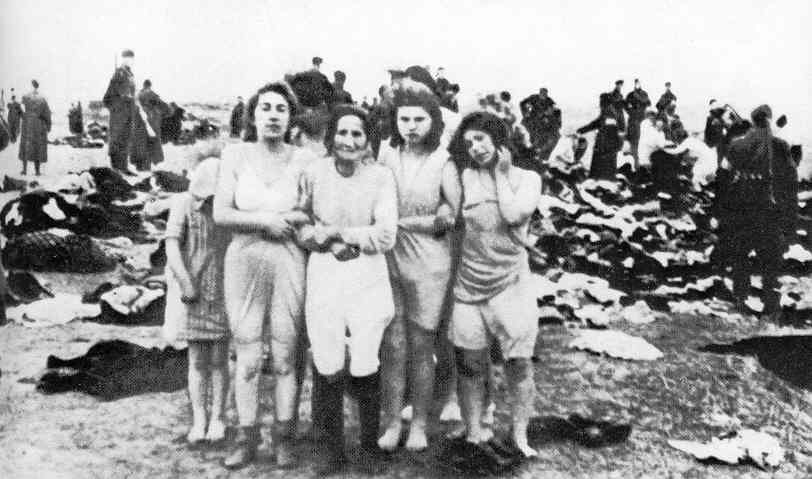
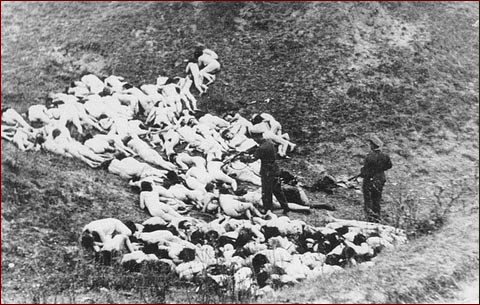
A German police officer
shoots Jewish women still alive
after a mass execution of Jews from the Mizocz
ghetto, Poland, October 14, 1942
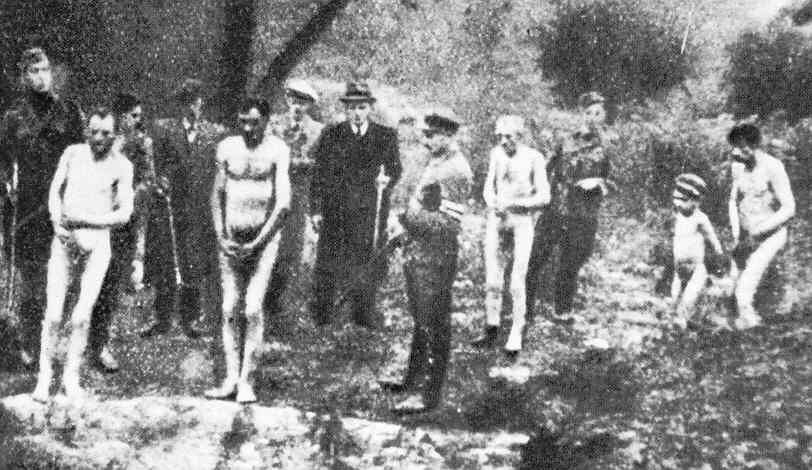
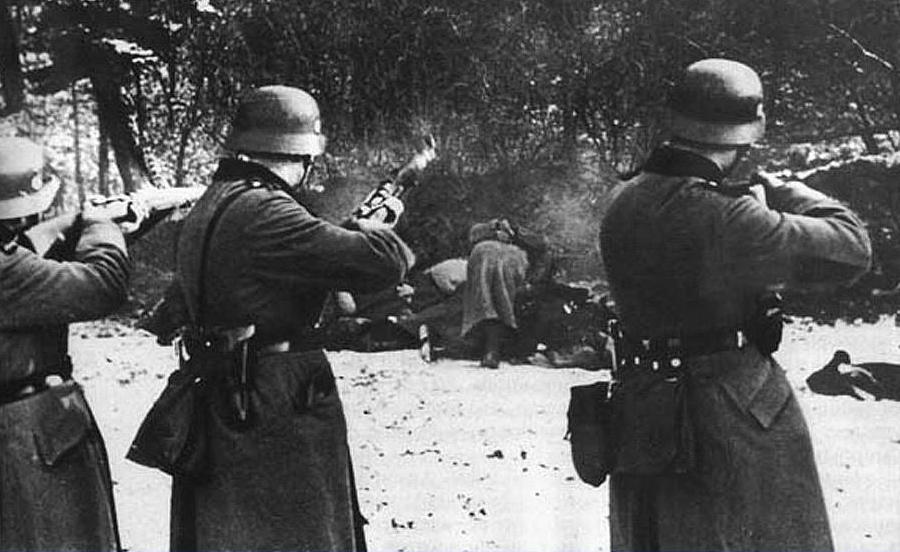
JAPAN'S
ATTACK ON PEARL HARBOR (DECEMBER 1941) BRINGS AMERICA INTO THE WAR |
The Japanese prepare themselves
for a major offensive
against the Western democracies in Asia and the Pacific
|
Growing tensions with Japan
Americans
watched in horror as the Japanese took advantage of the new French
Vichy government by requiring the French to give Japanese troops access
to their colonial holdings in Southeast Asia (Vietnam, Cambodia and
Laos) ... so that the Japanese could build military bases there from
which they could then conduct attacks of China from the South.
The Americans were very sympathetic to the Chinese … and reacted by
imposing an embargo on the sale to Japan of strategic goods: oil, scrap
iron, minerals as well as military products such as aircraft parts –
all vital to a resource-poor Japan. This – plus anti-Japanese racial attitudes reflected in American limits
on Japanese immigration – infuriated the Japanese military leaders,
who were suffering from some of the same racial illusions of greatness
that had affected the Nazis. Not all the Japanese were certain
this plan would work, notably Admiral and Commander-in-Chief of the
Japanese navy, Admiral Isoroku Yamamoto, who had studied for two years at
Harvard and who offered the opinion that if this strike did not work as
planned, the endeavor would succeed only in awakening a sleeping lion,
with dire results for Japan. Nonetheless he submitted himself to the
majority of his military colleagues and went along with the plan … especially as it had the emperor Hirohito's full support.
|
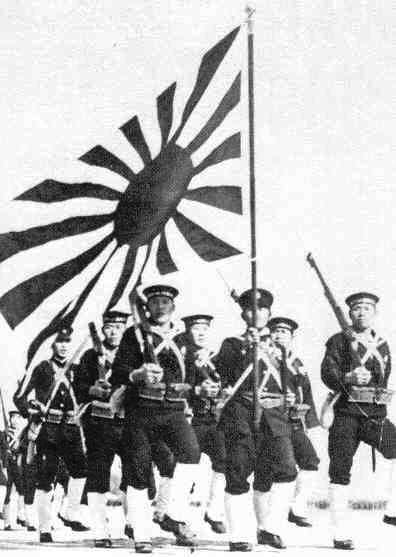
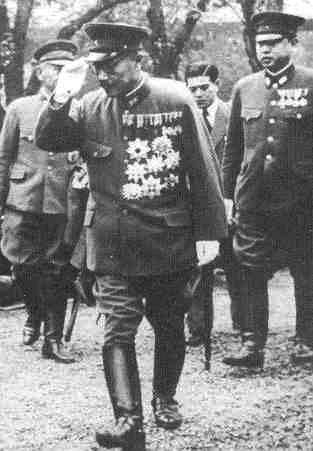
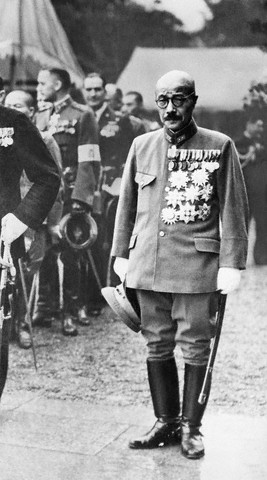
Bettmann/Corbis
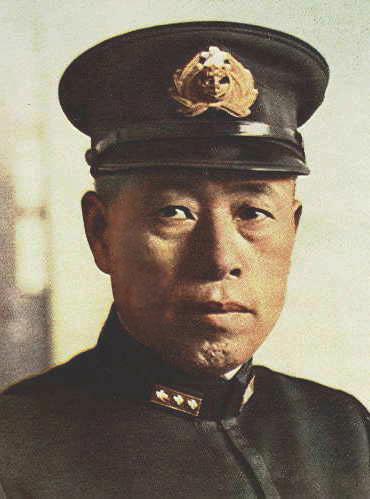
|
"A
date which will live in infamy" Thus at dawn on Sunday morning,
December 7th, 1941, without a declaration of war or any warning to the
Americans,2 Japanese
carrier-based airplanes attacked the Pearl Harbor naval station,
sinking all the battleships anchored there and wiping out nearly all of
the airplanes still parked at the air station But the attack had an effect quite opposite what the Japanese had intended. Instead of forcing America to cringe before Japanese power, the attack pushed America overnight to a willingness to become a dedicated fighting nation. The atack on Pearl Harbor had indeed just awakened a great sleeping lion. 2Japanese civilian diplomats had been in Washington claiming to want to negotiate an improvement in Japanese-American relations ... when they were instructed instead to deliver a declaration of war. But they were still working on a translation of the declaration when the attack got underway in Hawaii.
National Archives 80-G-30549. 
National Archives NA-80-30554 National Archives 80-G-30550. 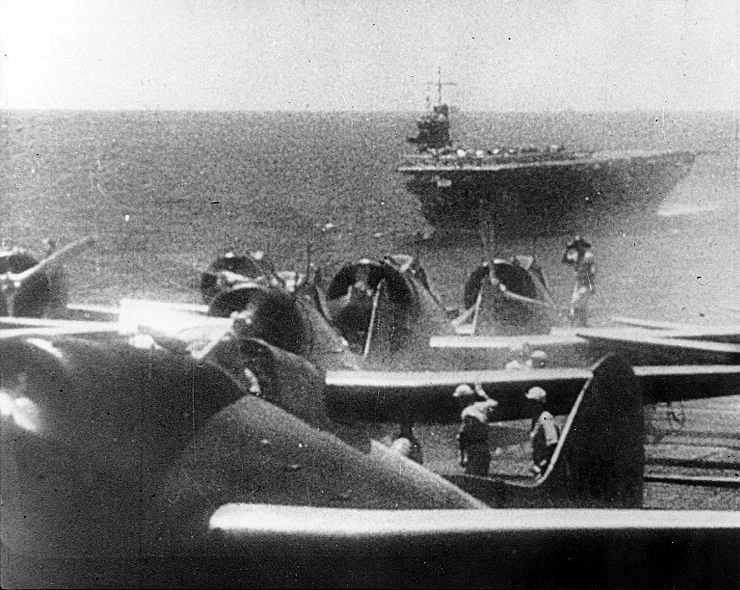
Japanese Aichi D3A1 "Val"
dive bombers of the second wave preparing for take off. Aircraft carrier Soryu
in the background. "USS Shaw (DD-373)
exploding during the Japanese raid on Pearl Harbor." By an unknown photographer,
December 7, 1941 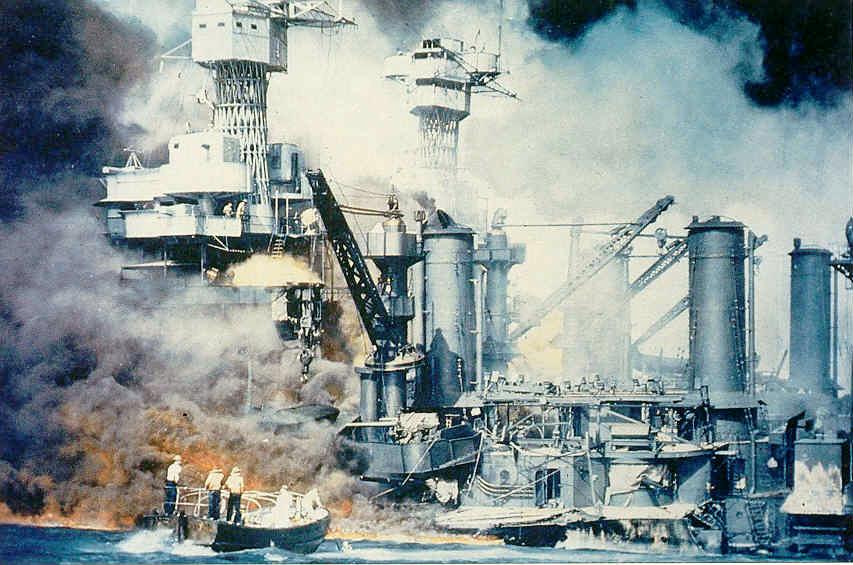
Rescuing a sailor from fiery
waters around the USS West Virginia - December 7, 1941
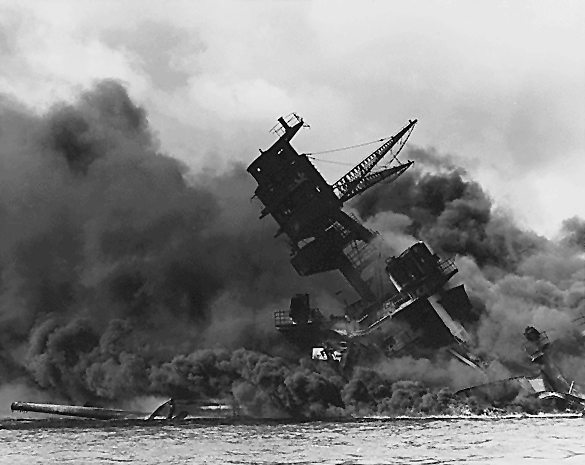
The USS Arizona (BB-39)
burning after the Japanese attack on Pearl Harbor, 7 December 1941.
The ship is resting on the harbor bottom. The supporting structure
of the forward tripod mast
has collapsed after the forward magazine exploded.
"Pearl Harbor, T.H. taken by surprise,
during the Japanese aerial attack. USS West Virginia aflame." December
7, 1941 U.S.S. West Virginia
and U.S.S. Tennessee burn after Japan's attack on Pearl Harbor, December
7, 1941
The U.S. Navy battleship
USS
California (BB-44) slowly sinking alongside Ford Island, Pearl Harbor,
Hawaii,
as a result of bomb and torpedo damage, 7 December 1941. The destroyer USS Shaw
(DD-373)
is burning in the floating dry dock YFD-2 in the left distance. The battleship USS Nevada
(BB-36) is
beached in the left-center distance.
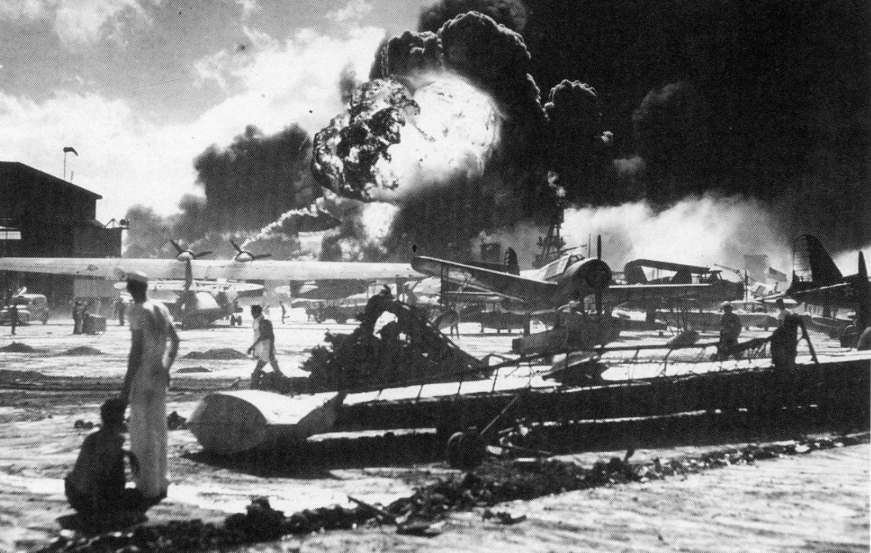
National Archives NA-80-G19948 
A pajama-clad observer of
Japan's early morning surprise attack
on the American naval base
at Pearl Harbor - December 7, 1941 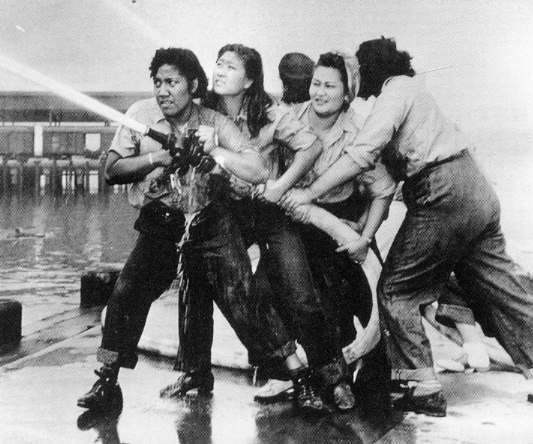
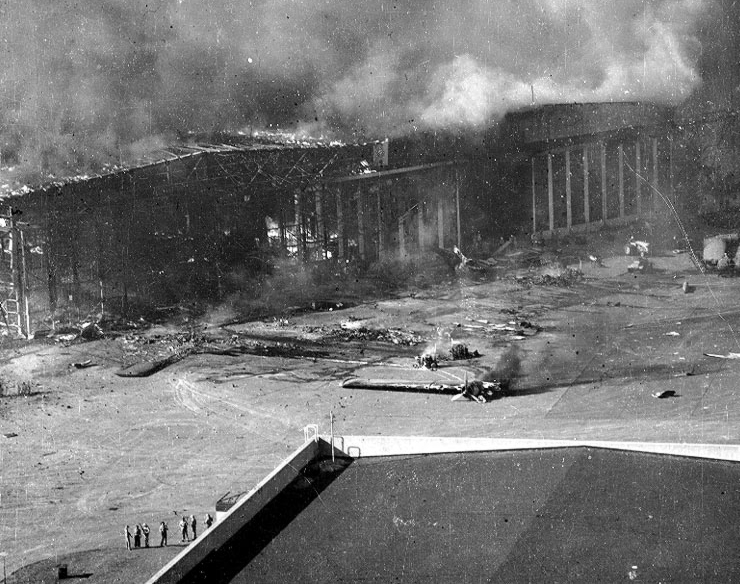
U.S. Navy planes and a hangar
burning at the Ford Island Naval Air Station's seaplane base, during or immediately after
the Japanese air raid on Pearl Harbor, Hawaii (USA), on 7 December 1941.
The ruined wings of a Consolidated PBY Catalina patrol plane are at left and in the center.
Note men with rifles standing in the lower left.
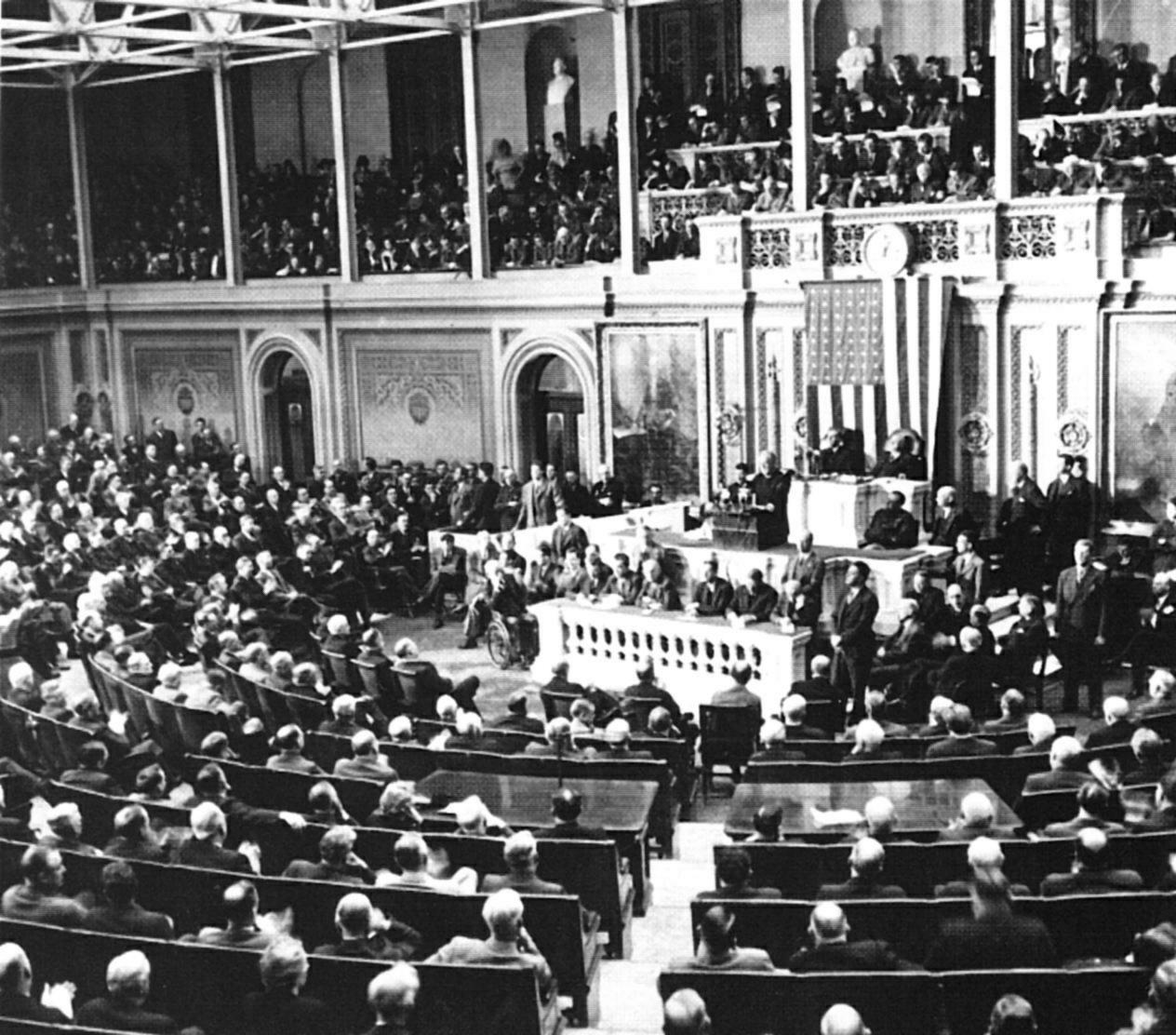
Ofice of War Information collection
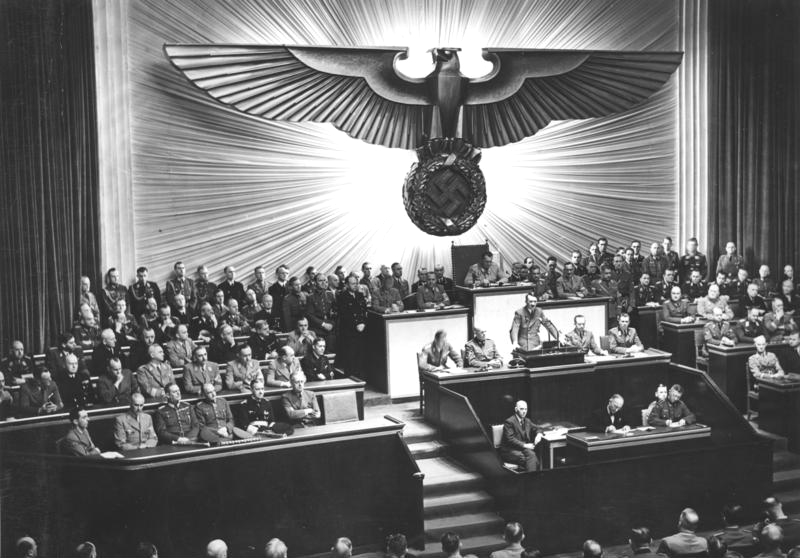
Adolf Hitler delivers a speech
to the Reichstag on the subject of Roosevelt and the war in the Pacific, declaring war on the United
States - December 11, 1941
 Go on to the next section: The War In Asia and the Pacific Opens Up
 |
